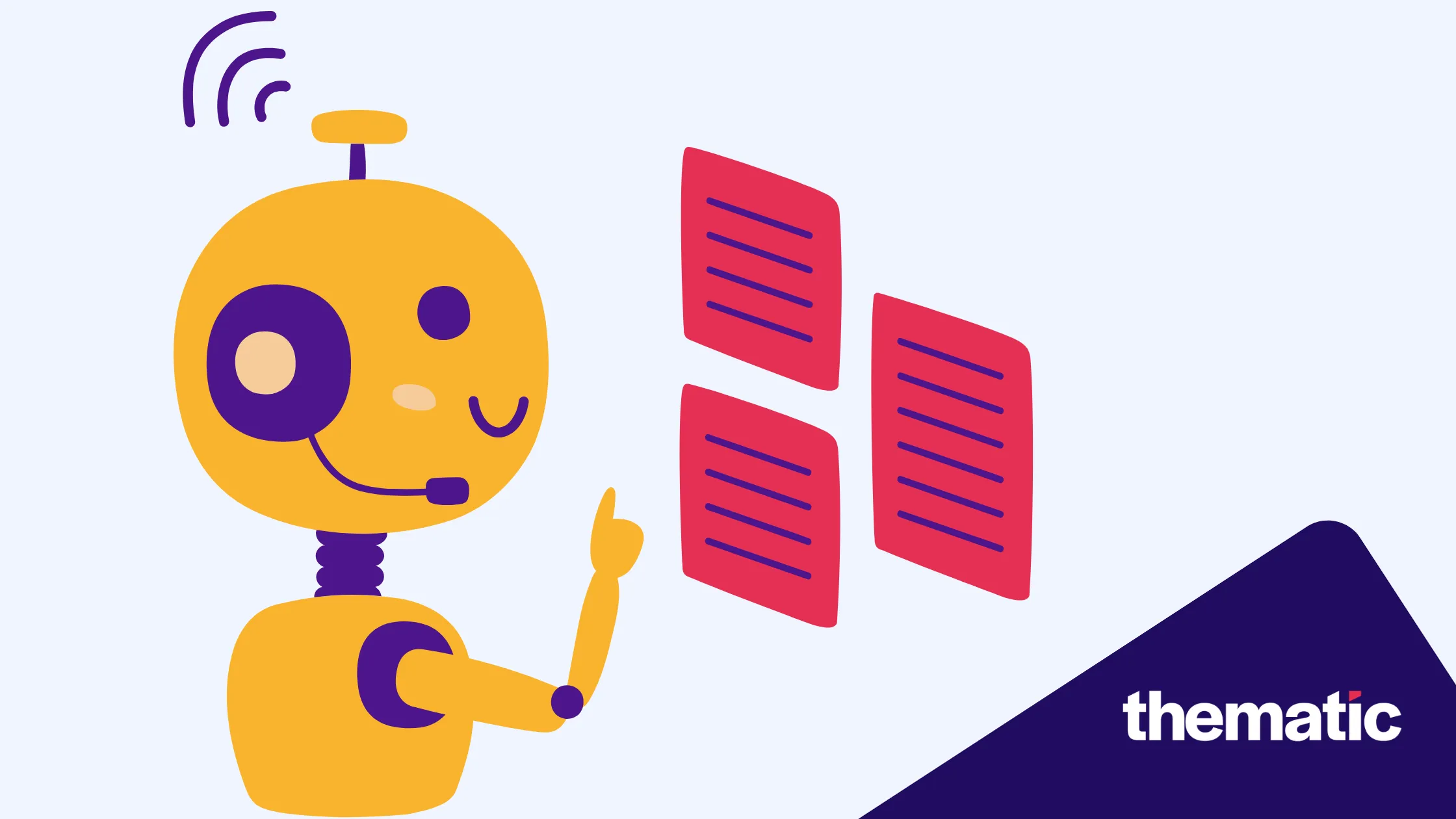
If you work in customer experience (CX), this article is for you. Explore how LLMs are poised to make a radical difference in CX and beyond.

Large Language Models (LLMs) are set to revolutionize the way customers engage with technology and receive personalized services.
If you work in customer experience (CX), then hold on to your hat - in this article I’ll explore how LLMs can make a radical difference in your work. And if you're looking for ways to upskill, I've shared a couple of learning resources at the end of this post.
To get started, I used an LLM - in this case, OpenAI’s GPT-4, to outline ways in which LLMs will affect CX.
The context: You can give the system instructions on how to answer your questions. Tell it to be a superstar marketer, a personality like Oprah, or anything really. There’s even a ‘catGPT’ that answers every question with meows! I chose the following:
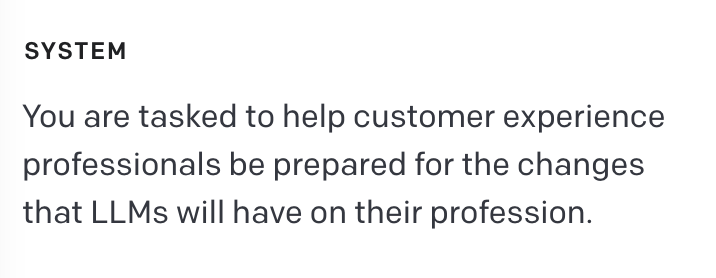
Then, I asked for five examples of how LLMs will affect the work of customer experience professionals. Here are the answers:
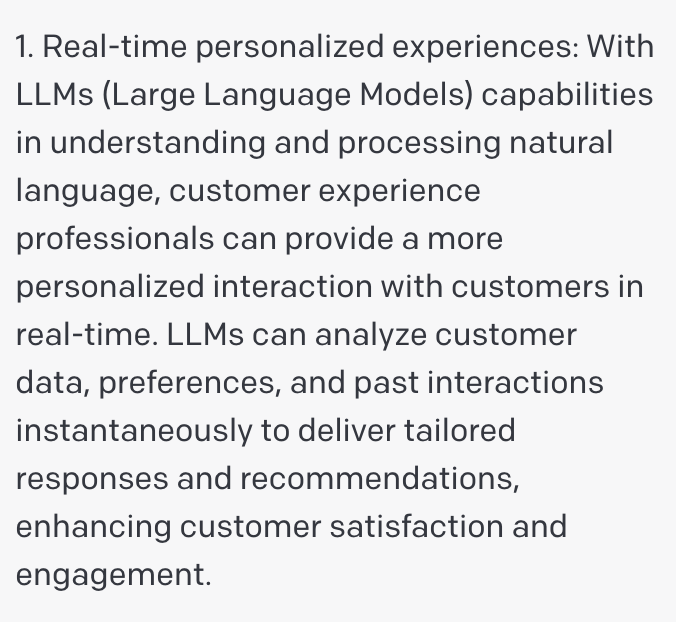
This has potential, but I’m not convinced the technology is there yet. Yes, LLMs can analyze all of the data you hold for a customer instantaneously, and right now, I’d expect systems to be able to deliver this information to support staff when handling a customer call.
But total automation of customer data to personalize an interaction raises questions, and there are considerable limitations.
Personalization has been in place in for a long time. For example, someone who regularly buys trail shoes is flagged in your CDP, and then targeted in the next marketing campaign that features similar shoes.
I expect LLMs will be able to automate these types of processes without a problem - but it’ll be up to CX professionals to strike the right balance between personalization and respecting personal boundaries.
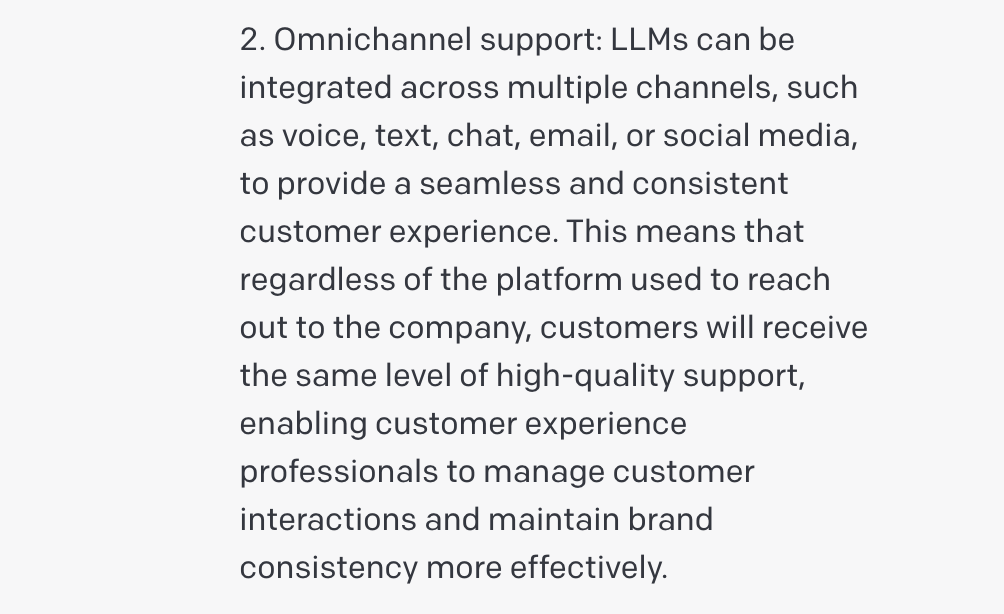
There’s a lot of potential here. Consistent, accurate customer support across all channels sounds fantastic.
But is it realistic? Yes and no.
With adequate resources, data security and a set up that sends complex issues straight to a real support agent, LLMs can win here.
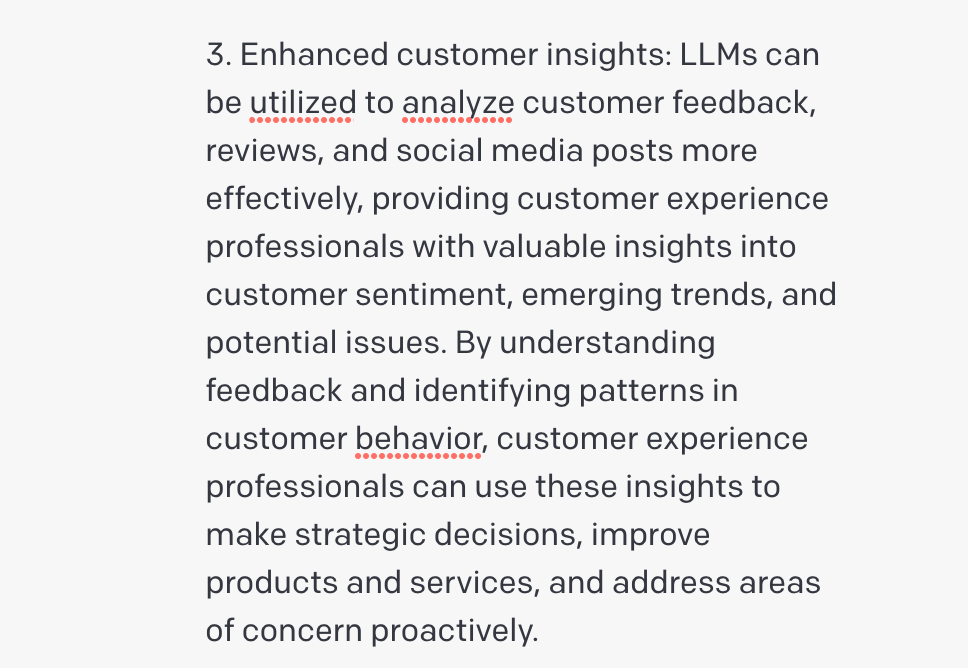
This is exactly what we do here at Thematic. We’ve already securely embedded LLMs into our platform to improve theme discovery and create easy-to-read summaries from hundreds of thousands of customer comments.
Even better, we've just implemented a feature called Answers, which allows users to ask any question about their customer feedback, like “What are the top issues for users on our paid plan?” and receive a trusted narrative answer with visuals.
Analyzing text data, and especially customer feedback at scale, has been a difficult problem to solve. For years researchers avoided sending open-ended survey questions to customers because analyzing them is hard!
Social media mentions and online reviews can be very noisy - full of ‘junk’ that doesn’t matter to your company. With LLMs - and platforms like Thematic - you can tune out all this noise and focus on valuable insights.
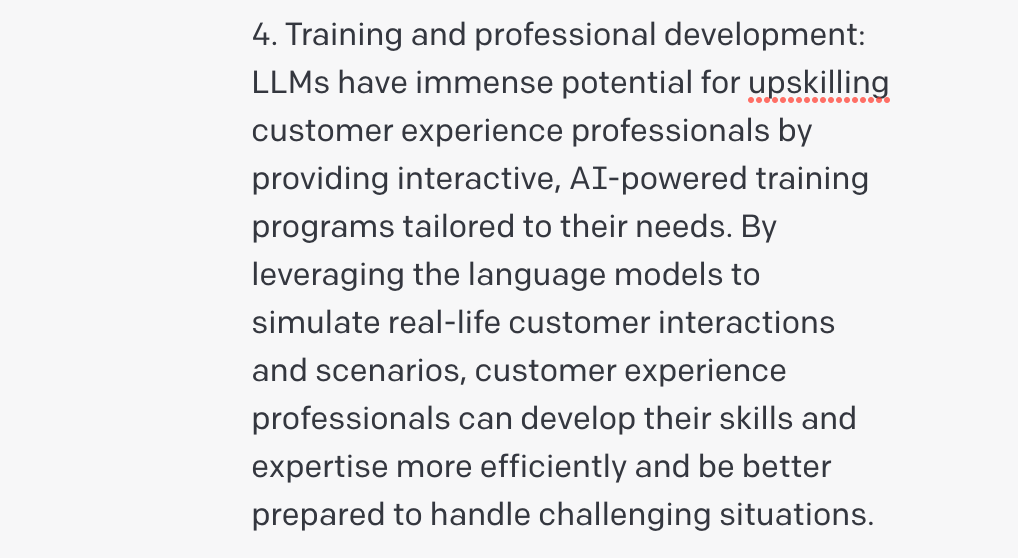
It looks like the model is trying to align CX professionals with frontline support staff and call center agents.
In most cases, CX professionals don't interact directly with customers. But there is value in using LLMs as training tools for call center agents. CX professionals can verify the programme, to make sure it's accurate and meets company needs.
So, train your LLMs on existing customer interactions - omitting any personally identifiable information - and train your support center staff on 'real' scenarios.
Remember how I instructed the LLM to act a certain way at the start of this article? Similarly, you can ask it to respond as a customer with specific needs or matching a difficult customer segment.
Then your support center team can interact with the LLM just as they would a real customer.
Of course, there are a few caveats:
Why not have the best of both worlds? Optimize your training with LLMs, validate the programmes as needed, and provide peer-to-peer support when required. Support staff can get up to speed quickly, and don’t lose their connection to the rest of the team.'
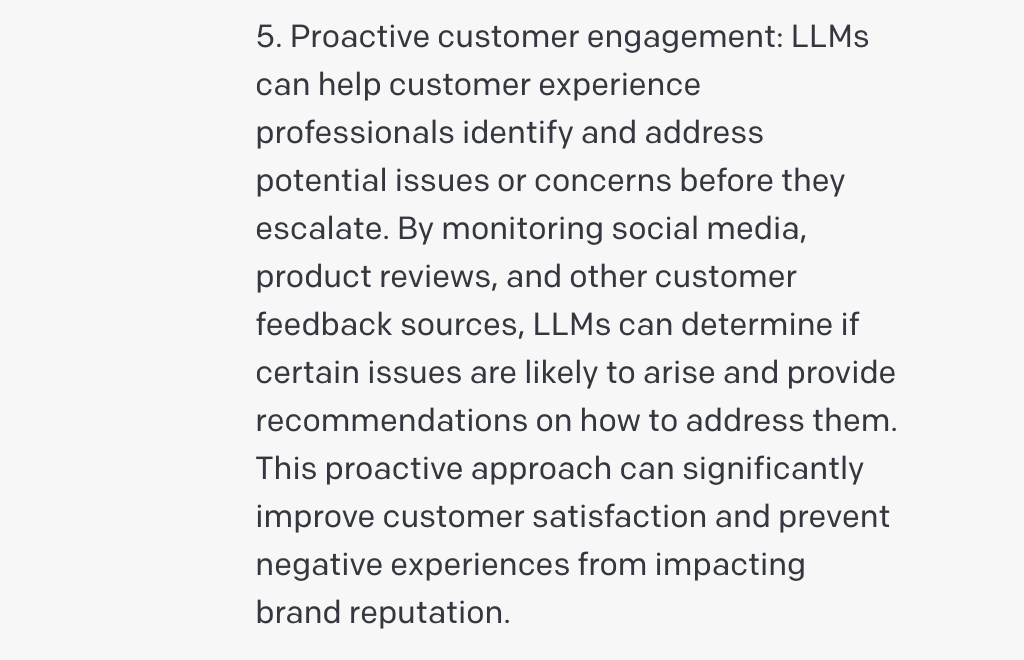
This is partially customer feedback analysis and partially social listening; bringing the two together to get a 360 view of your customers, and addressing issues before they become a major problem.
Instead of just looking at feedback, you consider the entire customer journey:
What's the best action in both cases? And what's the most cost-effective way to keep both customers and re-build trust?
An LLM powered platform, like Thematic, can look at data from surveys, social media and online reviews - individually or altogether. You're able to quantify cancellations and complaints, and track the reasons for each. Connect this data with your customer data platform, and it's easy to see how different customer segments are being let down.
As LLMs get smarter, and learn your specific business context, they’ll get better at offering solutions to problems as they arise. But currently they are best used to detect issues and present the data so that CX professionals can take action.
Some of the above changes are already here, and others are well on their way. So how can you be ready to take best advantage of this technology?
1. Stay updated: Learn about AI advancements and integrate them into your customer experience strategies where appropriate.
First and foremost with LLMs, get up to speed on prompt engineering. This means learning how to get the best out of an LLM when asking it to complete a task.
There's a great prompt engineering guide on GitHub. They also have an extensive list of ChatGPT prompts that provide a great starting point. Both are great for technical and non-technical people.
Consider signing up for a newsletter that covers AI trends, so you can stay on top of industry advancements. A good one is TLDR AI - they send one daily email summarizing key AI news stories. Other good options (although a bit more technical) are The Download and The Batch.
Give yourself a project. Think about your existing processes that could be actioned or improved by generative AI technology. What problems do you want to solve? What data is available to help solve the problem? Talk to your data science team (if you have one) or your development team and see if you can work out a solution. You'll learn a lot in the process!
2. Combine human and AI strengths: The new ‘work smarter, not harder’. Leverage both human expertise and LLM capabilities for bringing customer insights closer to your team.
Strategy first, technology second. Take the time to map out how new tools will integrate with your existing workflows. For example, before adding an AI chatbot to your site, ask questions like:
3. Foster innovation and adaptability: AI is a tool to help you, not replace you. Cultivate a company culture that embraces change and adapts to new technologies, so you can focus on the fun stuff, and leave the repetition to LLMs!
If you'd like to see how Thematic is leveraging LLMs to improve feedback analysis, feel free to book a time with our team. We'd love to show you how we can save you huge amounts of analysis time, and deliver instant, trusted insights!
Join the newsletter to receive the latest updates in your inbox.